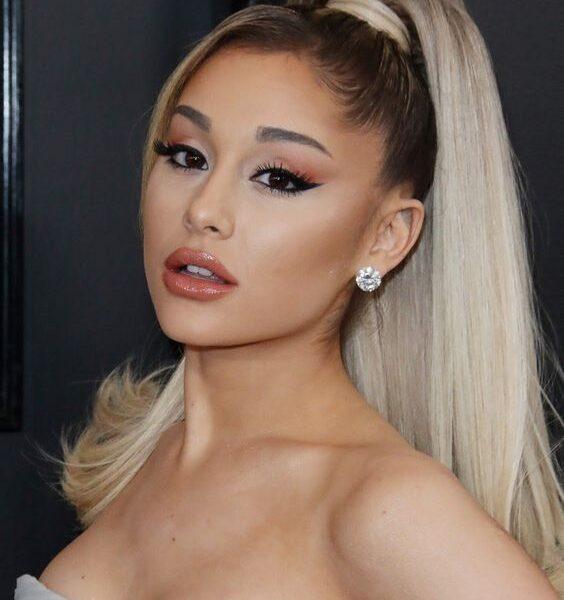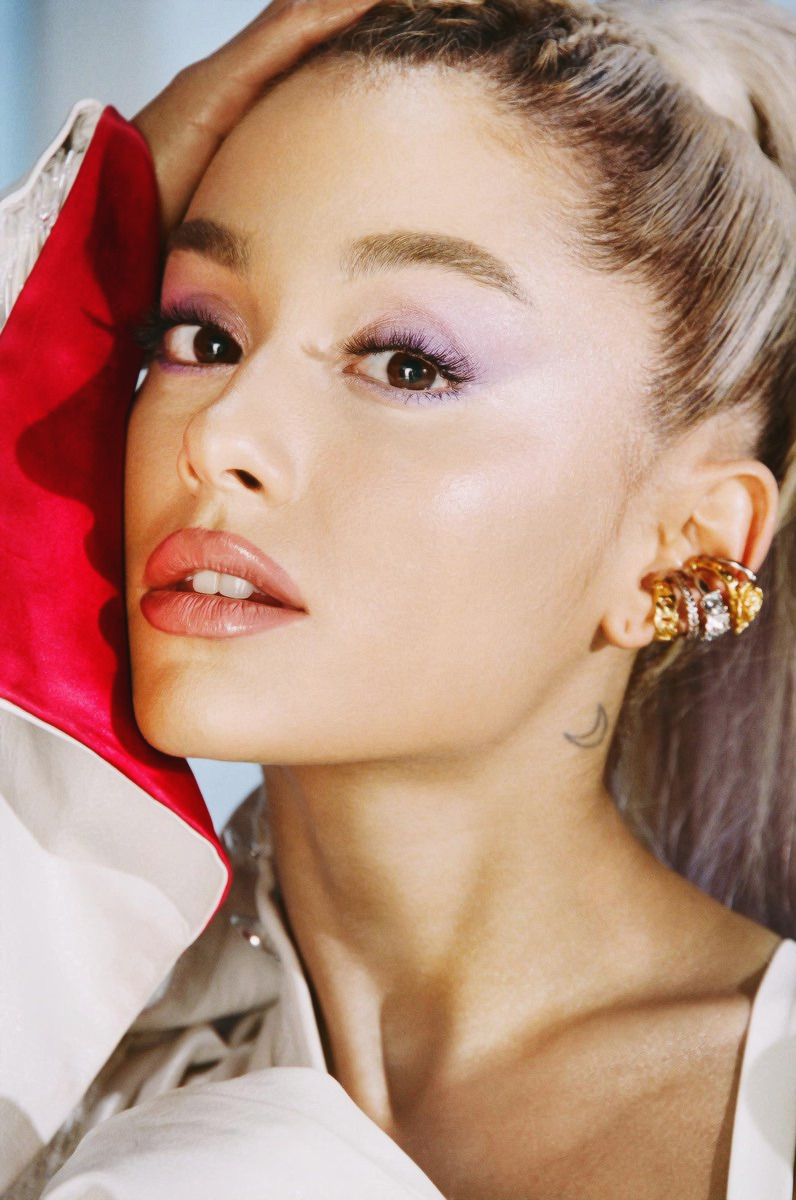Alright, buckle up, folks. We’re diving into the world of viral internet phenomena, specifically focusing on “nude Ariana Grande fakes.” Now, before we go any further, let’s set the record straight: these images are NOT real. They’re digitally altered or AI-generated content meant to grab attention, but they’re far from the truth. If you’re here because you’re curious, confused, or just want to know more, you’ve come to the right place.
Let’s face it, the internet can be a wild ride. In this digital age, fake images, videos, and even deepfakes have become a part of our online experience. Celebrities like Ariana Grande often become targets for these kinds of viral trends. But why? And how do these fakes even come about? We’re going to break it all down for you.
Before we jump into the nitty-gritty, let’s talk about why this topic matters. It’s not just about one celebrity or one set of fake images. It’s about understanding the impact of misinformation, the ethics of creating and sharing such content, and how we, as consumers of media, can navigate this tricky landscape. So, grab a snack, and let’s get started!
Read also:Camilla Araujos Hottest Videos
Who is Ariana Grande? A Quick Bio
Before we dive into the fake nude images, let’s take a moment to appreciate the real Ariana Grande. Born on June 26, 1993, in Boca Raton, Florida, Ariana is more than just a pop star. She’s a singer, songwriter, actress, and a global icon. Her rise to fame began with her role as Cat Valentine on the Nickelodeon series “Victorious” and its spin-off “Sam & Cat.”
Here’s a quick rundown of her journey:
- 2013: Released her debut album “Yours Truly,” which included hits like “The Way.”
- 2014: Followed up with “My Everything,” featuring chart-topping tracks like “Problem” and “Break Free.”
- 2016: Dropped “Dangerous Woman,” showcasing her growth as an artist.
- 2018: Released “Sweetener,” a critically acclaimed album with tracks like “No Tears Left to Cry.”
- 2019: Dropped “Thank U, Next,” which became a cultural phenomenon and earned her a Grammy nomination.
But Ariana’s impact goes beyond music. She’s an advocate for mental health awareness, LGBTQ+ rights, and gun control. Her resilience in the face of personal tragedy, including the Manchester Arena bombing in 2017, has made her a beacon of strength for millions of fans worldwide.
Ariana Grande’s Bio Data
| Full Name | Ariana Grande-Butera |
|---|---|
| Date of Birth | June 26, 1993 |
| Place of Birth | Boca Raton, Florida, USA |
| Occupation | Singer, Songwriter, Actress |
| Claim to Fame | Pop sensation, star of Nickelodeon shows |
Understanding Nude Fakes: What Are They?
Okay, let’s get into the meat of the matter. Nude fakes, also known as deepfakes or digitally altered images, are created using advanced technology to manipulate photos or videos. In the case of Ariana Grande, these fakes often involve taking existing images of her and altering them to create something entirely fabricated.
But how does this happen? Well, it’s all thanks to AI and machine learning algorithms. These technologies can analyze thousands of images and create realistic-looking fakes that can fool even the most discerning eye. Scary, right?
Here’s the kicker: these fakes aren’t just harmless fun. They can have serious consequences for the individuals involved, including emotional distress, reputational damage, and even legal issues. So, why do people create them? We’ll explore that in the next section.
Read also:Lee Ashers Wife Meet Wifes Name
Why Do People Create Nude Fakes?
Now, this is where things get interesting. There are several reasons why people create nude fakes, and none of them are particularly noble. Some do it for attention, others for profit, and some just do it because they can. But let’s break it down:
- Attention-Seeking: The internet runs on clicks, and nothing grabs attention like scandalous content. By creating nude fakes of celebrities, creators can generate buzz and drive traffic to their websites or social media profiles.
- Profit Motive: Believe it or not, some people make money from these fakes. They sell them on underground forums or use them to extort the individuals involved.
- Technical Showboating: For some, it’s all about proving they can do it. The more realistic the fake, the more impressive it is. But at what cost?
It’s important to note that creating or sharing nude fakes without consent is illegal in many jurisdictions. So, not only is it unethical, but it can also land you in hot water legally.
The Impact on Ariana Grande
Imagine being one of the most famous people in the world and having your image manipulated and shared without your consent. That’s the reality Ariana Grande and other celebrities face every day. The impact on their mental health and well-being can be devastating.
But Ariana isn’t one to stay silent. She’s spoken out about the challenges of fame and the importance of authenticity. In a 2020 interview with Vogue, she said, “I’ve learned that my worth isn’t tied to the number of likes or shares. It’s about being true to myself and my art.”
Her resilience in the face of such challenges is inspiring, but it’s also a reminder of the importance of respecting others’ privacy and consent online.
How to Spot a Fake Image
So, how can you tell if an image is real or fake? Well, there are a few telltale signs to look out for:
- Pixelation: Fakes often have blurry or pixelated areas where the image has been altered.
- Inconsistencies: Look for inconsistencies in lighting, shadows, or proportions. These can be red flags for a fake.
- Reverse Image Search: Tools like Google Reverse Image Search can help you track down the original source of an image.
Remember, just because something looks real doesn’t mean it is. Always approach viral content with a healthy dose of skepticism.
The Role of Technology in Fighting Fakes
Thankfully, technology is also on our side in the fight against fake content. Companies like Google and Facebook are investing heavily in AI tools to detect and remove deepfakes and other manipulated content. But it’s not a perfect system, and there’s still a lot of work to be done.
As consumers, we also have a responsibility to report suspicious content and educate ourselves on how to spot fakes. It’s all about being informed and proactive.
The Legal Implications of Nude Fakes
Now, let’s talk about the legal side of things. Creating or sharing nude fakes without consent is illegal in many countries, including the United States. Under U.S. law, it falls under the category of non-consensual pornography, also known as revenge porn.
Penalties for violating these laws can include fines, jail time, and even civil lawsuits. So, if you’re thinking about creating or sharing a nude fake, think again. It’s not worth the risk.
But it’s not just about the law. It’s about doing the right thing. We all have a responsibility to treat others with respect and dignity, both online and offline.
The Ethics of Sharing Nude Fakes
Let’s be real for a second. Sharing nude fakes is not cool. It’s disrespectful, invasive, and just plain wrong. But why do people do it? Is it because they don’t understand the impact? Or is it because they don’t care?
Here’s the thing: when you share a fake image, you’re contributing to a culture of exploitation and disrespect. You’re telling the person involved that their privacy and consent don’t matter. And that’s not okay.
So, the next time you see a fake image, think twice before hitting that share button. Ask yourself, “Is this really something I want to be a part of?” Chances are, the answer is no.
How to Support Celebrities Like Ariana Grande
If you’re a fan of Ariana Grande or any other celebrity, there are plenty of ways to show your support without contributing to the spread of fake content. Here are a few ideas:
- Buy Their Music: Support their art by purchasing their albums or streaming their music.
- Attend Their Concerts: Experience their live performances and show your appreciation in person.
- Respect Their Privacy: Respect their boundaries and don’t share or engage with content that violates their privacy.
By supporting them in these ways, you’re helping to create a positive and respectful fan culture. And that’s something we can all get behind.
What Can We Learn from This?
At the end of the day, the phenomenon of nude fakes is a reflection of the challenges we face in the digital age. It’s a reminder of the importance of consent, respect, and ethical behavior online. And it’s a call to action for all of us to be more mindful of how we consume and share content.
So, the next time you see a viral image or video, take a moment to think about its origins and implications. And if it’s a fake, do the right thing and don’t share it. Together, we can make the internet a safer and more respectful place for everyone.
Conclusion
Alright, folks, that’s a wrap. We’ve covered a lot of ground today, from understanding what nude fakes are to exploring their impact on celebrities like Ariana Grande. We’ve talked about the legal and ethical implications of creating and sharing such content, and we’ve discussed ways to support our favorite stars in a positive and respectful way.
Here’s the bottom line: fake content isn’t harmless. It has real-world consequences for the people involved, and it’s up to all of us to do our part in combating it. So, let’s be mindful, respectful, and proactive in our online interactions.
And hey, if you’ve learned something from this article, why not share it with your friends? Or leave a comment and let us know your thoughts. Together, we can make a difference!
Table of Contents
- Who is Ariana Grande? A Quick Bio
- Understanding Nude Fakes: What Are They?
- Why Do People Create Nude Fakes?
- The Impact on Ariana Grande
- How to Spot a Fake Image
- The Legal Implications of Nude Fakes
- The Ethics of Sharing Nude Fakes
- How to Support Celebrities Like Ariana Grande
- What Can We Learn from This?
- Conclusion



